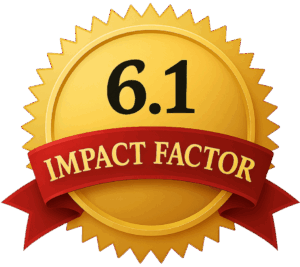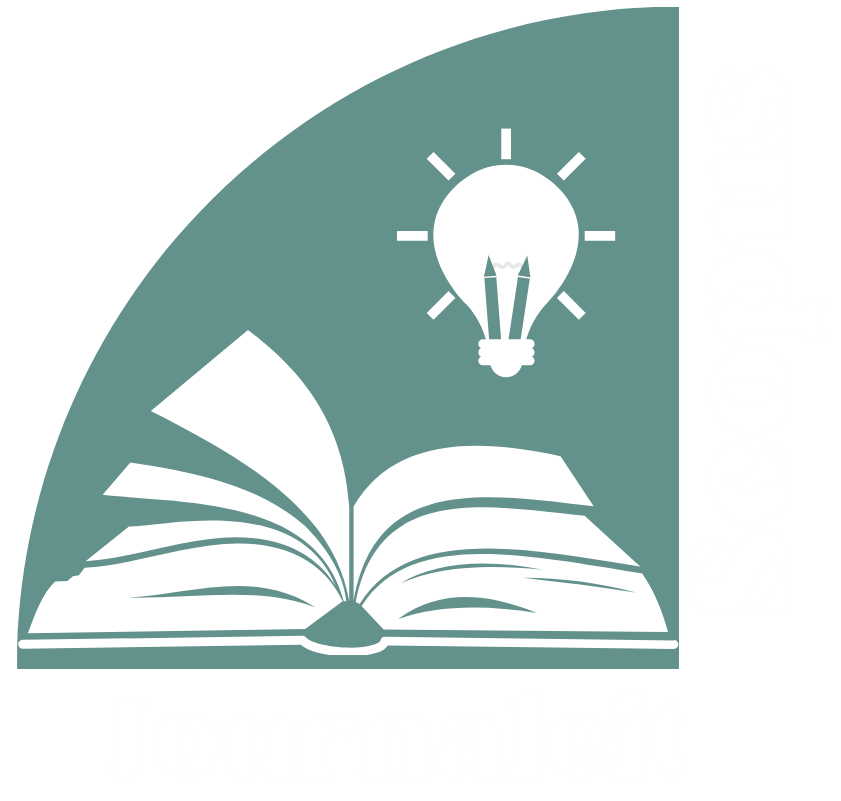
Volume 25 Issue 8 August 2025
Impact of Big data & Artificial intelligence on Fourth Industrial Revolution
Industrial revolution is one of the biggest challenges in today's innovative and technical era so this world has gone through a series of industrial revolutions since 18th century. Fourth industrial revolution is the need of every country for the existence of big data (BD) and artificial intelligence (AI) and making a digital based impact. Today's world is the result of innovations and technological advances due to BD and AI. Every country is aiming to achieve fourth industrial revolution to empower society in a better way for the economic and social development. We are at the beginning of a fourth industrial revolution that is fundamentally changing the way we live, work, and relate to one another. Fourth industrial revolution is related with big data, artificial intelligence, robotics, the internet of things, autonomous vehicles, 3D printing, nanotechnology, materials science etc. The objective of this paper is to demonstrate and ascertain the relation & impact of big data and artificial intelligence between Individual perception & fourth industrial revolution. After study and analysis of wide literature, it is reasoned out that fourth industrial revolution has deep impact on the BD & AI. Research shows that BD & AI both are giving the pace to the fourth industrial revolution in changing the way to work, socialize, create and share information, and organize the flow of people, ideas, and things around the globe. In this context, the researcher has undertaken to analyze the Individual perception towards fourth industrial revolution on behalf of big data and artificial intelligence. The primary data was analyzed for correlation and t test to compare these two for knowing its impact on 4th industrial revolution. The secondary data is used to identify the theory of BD & AI and how it is beneficial for the fourth industrial revolution.
Dr. NEERAJ KUMAR, Dr. SANTOSH KUMAR GUPTA (2025). Impact of Big data & Artificial intelligence on Fourth Industrial Revolution. Research Paper, 25(8), 1-9. http://journaleit.org/wp-content/uploads/1_Aug_2025.pdf
IMPLEMENTATION OF MAGNETISM IN MATERIAL HANDLING SYSTEM
The project focuses on the design and production of a ground floor crane fitted with a load locking unit at any level as a special feature, to address the problem of failure due to a fixed load. The mobile crane is designed to carry a maximum load of about 5 kg, and a counterweight of 50 kg. The materials used are; sheet metal, profile bars, bolts, nuts, metal rolls etc. Processing procedures include cutting, filling, welding and assembling. For permanent contact, the arc welding process was used. As mentioned earlier, a ground floor crane gains its value in the transport of heavy machine parts inside and outside the workspace. It can also be used to load and unload machine parts onto trucks.
Milan Halai, Vasu Sojitra, Nishil Poojara, Parita Sheth (2025). IMPLEMENTATION OF MAGNETISM IN MATERIAL HANDLING SYSTEM. Research Paper, 25(8), 10-14. http://journaleit.org/wp-content/uploads/2_Aug_2025.pdf
DIFFERENT TYPES OF INTRUCTIONAL STRATAGIES IN TEACHING-LEARNING (T-L) PROCESS
Any teaching-learning (T-L) experience is planned and implemented to develop intended outcomes in the learners. A teacher has to be concerned about how learning can be made more effective and efficient and this is where the different types of instructional methods can be of great help. This paper endeavours to discuss the concept of instructional strategy and its importance in the realm of engineering education.
Dr. S. Arun Sankar (2025). DIFFERENT TYPES OF INTRUCTIONAL STRATAGIES IN TEACHING-LEARNING (T-L) PROCESS. Research Paper, 25(8), 16-22. http://journaleit.org/wp-content/uploads/3_Aug_2025.pdf
A RESEARCH ON FINANCIAL STATEMENT ANALYSIS OF VODAFONE IDEA LIMITED BY USING THE TECHNIQUE OF RATIO ANALYSIS
Vodafone Idea Limited is a multinational telecommunication company. The main aim of this paper is to measure the financial performance of the Vodafone idea limited. The users (both fixed and mobile phone user) of Indian telecommunication sector are extremely high. Indian telecommunication network is second largest in the world. The present study is based on a research on financial statement analysis of Vodafone Idea Limited by using the technique ratio analysis and helpful to find the financial performance of the company. The study covers a period for last five financial years 2015-2016 to 2019- 2020 of the Vodafone Idea Limited. The financial ratios like liquidity ratio, solvency ratio, activity ratio and profitability ratios are used to evaluate the company’s performance.
Ms. Swapna Nambiar M.COM, Maheswari.D, Aishwariya. K. V, Swetha Sree, R. Ahmed Soilihi Riama (2025). A RESEARCH ON FINANCIAL STATEMENT ANALYSIS OF VODAFONE IDEA LIMITED BY USING THE TECHNIQUE OF RATIO ANALYSIS. Research Paper, 25(8), 23-26. http://journaleit.org/wp-content/uploads/4_Aug_2025.pdf
EXPERIMENTAL INVESTIGATION OF SWITCHING FREQUENCY OF MAGNETIC SESNOR USING STATISTICAL APPROACH
World is getting evolved around technology, automation technology is one such technology which moves the world to smarter and comfort zone.Robotics and automation technology find its position in real time application with IoT etc. Industrial sensors further categorized as retro reflective sensor, capacitibve sensor, photoelectric sensor, ultrasonic sensor and magnetic sensor(Proximity sensor). The switching frequency of the sensor is the key factor to determine the performance of the system.In this paper a detailed study on one such key factor named switching frequency is taken for experimental study with magnetic sensors. In this paper, a genuine attempt is made statistically for captureing the switching frequency using PLC based on SPSS tool.
R.Rakesh, I.Karthic Subramiyan, Dr.R.Arumugam, M.Rajathi (2025). EXPERIMENTAL INVESTIGATION OF SWITCHING FREQUENCY OF MAGNETIC SESNOR USING STATISTICAL APPROACH. Research Paper, 25(8), 27-37. http://journaleit.org/wp-content/uploads/5_Aug_2025.pdf
AN EXPERIMENTAL INVESTIGATION OF GLASS FIBRE ON BOTTOM ASH BASED CONCRETE
Bottom ash is a hazardous by-product from coal based thermal power plants. Glass fibre increases the flexural strength and strain capacity of the concrete. In this project, bottom ash can is replaced with fine aggregates. The study was conducted to evaluate the strength characteristics of glass fibre and bottom ash on concrete. The concrete mix design was done for M30 grade concrete. Mix was prepared for different combinations (0%, 25%, 35%, 50% and 100%) replacement of sand by bottom ash with (0.3% of glass fibre).The specimen such as cubes of 150 x 150 x 150 mm in size and cylinder of 150 x 300 mm in size, beam of 1000 x 100 x 200 mm in size are casted and evaluate the properties such as compressive strength, split tensile strength & flexural strength has been analyzed and it has been compared with control mix for the duration of 7 and 28 days.
S.SRI SANTHOSH KUMAR, Prof. B.JOSE RAVINDRA RAJ (2025). AN EXPERIMENTAL INVESTIGATION OF GLASS FIBRE ON BOTTOM ASH BASED CONCRETE. Research Paper, 25(8), 38-94. http://journaleit.org/wp-content/uploads/6_Aug_2025.pdf
Wireless Sensor Network: Energy Base Data Aggregation
Now-a-days, Wireless sensor networks play an important role in a wide range of applications. All the sensor nodes equipped with non-replaceable batteries for monitoring the desired region by fixed topology. By using WSNs everywhere, it becomes the main key of the big data in the emerging world. WSNs monitor physical phenomenon changes like temperature, pressure, ambient light, solar radiation and humidity consuming a large amount of energy. Energy consumption is a primary challenge in WSNs. To decrease the energy consumption by network, this paper proposes modified energy saving based privacy preserving data aggregation method to eliminate the redundancy among sensing data. This proposed method expands the system lifetime by reducing the number of transmission among the nodes and the sink. The efficiency of proposed method has been correlated with state-of-arts methods. The execution outcomes show that the proposed MEBPP data aggregation method send more number of packets with less energy utilization and more network existence.
Mr. Suraj Kumar Ram, Mr. Mohammed Bakhtawar Ahmed (2025). Wireless Sensor Network: Energy Base Data Aggregation. Research Paper, 25(8), 95-102. http://journaleit.org/wp-content/uploads/7_Aug_2025.pdf
Influence of Magnesium on Mechanical Properties and Microstructure of Pure Aluminium
This paper deals with the influence of alloying with Magnesium of Pure Aluminium on their microstructure and Mechanical Properties. The additional level of magnesium is 2.5, 4.5, 6.5& 8.5 weight percent. The presence of Magnesium performed two types of event in liquid Aluminium. One of these is solid solution strengthening which is confirmed by the hardness & Tensile Testing. Another one is the formation of intermetallic phases like Al3Mg2 (β - Phase) by a eutectic reaction. As the amount of Mg increases Intermetallics of Al-Mg (β - Phase) is increases in developed alloy. These intermetallics are located at the grain boundary and pushed towards the grain boundary during solidification which is confirmed by Microstructural Analysis with the help of optical microscopy and Scanning electron microscopy. Grain size measurement was also carried out to understand the grain refining effect of Mg. Mg addition showed remarkable grain refinement from grain size no 1 to 6. As Magnesium content increases hardness and tensile value is increasing up to 4.5 wt% Mg after that large amount of β - Phase is formed which is brittle in nature which quite reduces hardness and tensile value.
Vidhi A Mistry, Dr I.B.dave, Dr M.S.dani , Dr V.J.Rao (2025). Influence of Magnesium on Mechanical Properties and Microstructure of Pure Aluminium. Research Paper, 25(8), 103-113. http://journaleit.org/wp-content/uploads/8_Aug_2025.pdf
OPTIMIZATION OF LIGHT GAUGE STEEL SECTION
Ecological, sustainable, and earthquake-resistant steel-framed constructions have been extensively developed in America, Asia, and Europe. Romania now has the opportunity to construct houses, apartments, offices, and storage facilities using the light gauge steel (LGS) framing system. To achieve efficient and cost-effective construction, sustainable development, and meet the requirements of steel-framed construction builders in Romania, there is a need to improve some of the steel's mechanical characteristics. The metallic profile, which is the main component of a steel-framed system, is made by cold roll forming laminated low carbon steel strips that have been galvanized for corrosion protection. Improving the material's hardness and tensile strength is a challenge due to the limitations that follow, including reduced material thickness, low carbon content required for the cold deformation process, estimated profile thermal deformation, and customized profile section to harden. This research focuses on optimizing the induction process (by high frequency current) applied to the LGS material. The advantages and benefits of improving the light gauge steel profile's hardness are highlighted in this article.
Swapnil Kulkarni, Sachin Magar, Yashodeep Salunkhe, Omkar Rajure (2025). OPTIMIZATION OF LIGHT GAUGE STEEL SECTION. Research Paper, 25(8), 114-121. http://journaleit.org/wp-content/uploads/9_Aug_2025.pdf
Literature Review on Trend and Quality of Research Work Carried Out in the Department of Education in Central Universities of India
The present research article “Literature Review on Trend and Quality of Research Work Carried Out in the Department of Education in Central Universities of India” is an attempt to study the trends and quality of research work carried out at PhD level in the department of education of few selected central universities by reviewing the available literatures. Without checking the quality at primary level of research, the quality of research cannot be improved. There is also need to see the balance in the areas of research done in the department of education. Doing research in particular area only by neglecting other areas of research would lead to duplication and imbalance in research which would affect the research development and whole research culture. As a result the whole nation suffers. The field of education is the nerve of the school education and led the higher education in policy and programmes. So, any imbalance in research in education would lead to imbalance in other fields of study. This study is important for the policy maker, teachers, researchers and other stake holders. The review of the literature as researcher believes would help to those who wish to study about the quality and trends of the research. This study would help researchers to contribute in this field and help the nation from the imbalance research in the field of education.
Mohammad Allam (2025). Literature Review on Trend and Quality of Research Work Carried Out in the Department of Education in Central Universities of India. Research Paper, 25(8), 122-133. http://journaleit.org/wp-content/uploads/10_Aug_2025.pdf
Analyzing the performance of Cascaded H-Bridge Multilevel Inverter with three phase multiwinding transformer and single phase supply
In this article, a cascaded H-bridge type multilevel inverter design is propose with a different harmonic reduction technique and multiwinding transformer. The proposed design includes the DC source, hybrid cascaded multilevel inverter, transformer and load circuit. Hybrid cascaded multilevel inverter is obtained Seven-level stepped waveform near sine wave and also increases the efficiency of the multilevel inverter. The seven level hybrid cascaded multilevel inverter fed to the load through the transformer. The algorithm was able to efficiently eliminate fifth and seventh harmonics from line current. Simulation and experiments were performed to show the proposed method work in practice. The observed harmonic detail results, it can be exhibit that the Total Harmonic Distortion is approximately 12.27% only. The 3rd level harmonics magnitude is 5.2% and 5th level harmonics is only 8.2%. Simulation results from SIMULINK/MATLAB software and hardware experimental results are tabulated. The results are explained with graphically.
P.Kathirvel, V.Karpagam, K.Vijayakumar, A.Venkatesh (2025). Analyzing the performance of Cascaded H-Bridge Multilevel Inverter with three phase multiwinding transformer and single phase supply. Research Paper, 25(8), 134-142. http://journaleit.org/wp-content/uploads/11_Aug_2025.pdf
Performance and Optimization of MPPT Techniques for Modeling, and Control of Solar PV system
today the power sector requirement is increasing continuously and reserve of fossil fuel is limited so we have already moved toward renewable generation. Demand of renewable sources of energy should be our prime focus to mitigate the power requirement. The solar power generation is of the best choice for power generate because it is freely available. Maximum power point tracking (MPPT) techniques is one of the most useful method to get maximum power at any instant of time. Classical MPPT techniques fail to provide an accurate output power thus; optimization of MPPT techniques play an important role in maximization of output power. Considering the dependency on renewable energy uses, this paper, presents various types of optimization to track MPPT techniques implemented on Photovoltaic (PV) system. These techniques applied for solar system is helpful in designing and improving efficiency of the PV system. Due to non linear characteristics of PV array a non-linear controller is most suitable for MPPT applications. The paper, first describe different types of characteristics of solar PV cell used for MPPT technique and followed by different optimization techniques incorporating fazzy, neural network Grey Wolf Optimization (GWO), Simplified Firefly Algorithm (SFA), Enhanced Grey Wolf Optimization (EGWO), Particle Swarm Optimization (PSO), etc have been discussed. Performance has been analyzed based on efficiency, tracking speed, converter used, application and implementation cost etc.
Md Fahim Ansari, Anis Afzal (2025). Performance and Optimization of MPPT Techniques for Modeling, and Control of Solar PV system. Research Paper, 25(8), 143-147. http://journaleit.org/wp-content/uploads/12_Aug_2025.pdf

